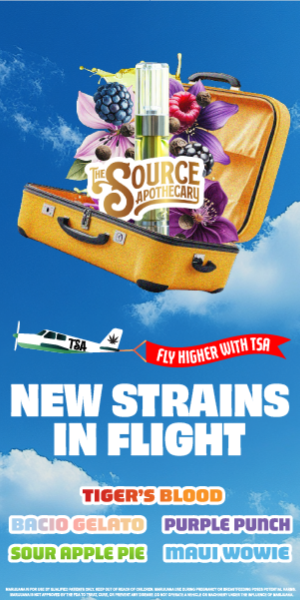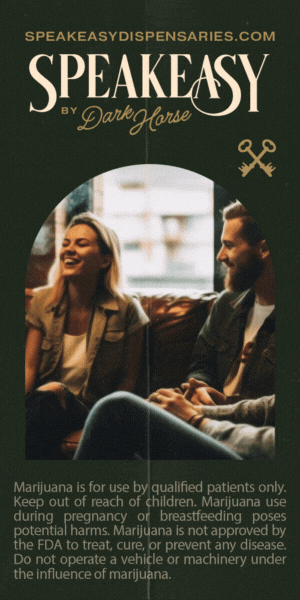Clearing more Smoke
Debunking Medical Marijuana Myths.
By Jessica Maxwell

In a follow-up to our first issue, we are clearing the smoke yet again by busting even more of the most common marijuana myths. Despite the great strides that medical marijuana research has made in the United States, historical stigmas persist. It seems that even at these moments of historic change, taking the time to research and spread awareness is critical to public perception of cannabis. Previously, we cleared the smoke on three myths. We debunked the long-held credo repeated by grandparents and parents alike that “marijuana is a gateway drug.” We also made sure to clear things up around the myth that marijuana leads to violence. And lastly, we brought forth compelling scientific research that proves that medical marijuana can have therapeutic benefits. In what follows, we present three more myths and raise questions about their validity.
MYTH
You have to smoke medical marijuana to benefit from it.
Some of the earliest accounts of marijuana usage document that marijuana plants were burned to “induce trance” (1) sometimes for ritualistic practice, other times for pleasure. In modern movies and television, the droopy-eyed stoner at a party passes around a joint or takes long rips off a bong. For many years, smoking marijuana, or the “flower” appeared to be the only way to experience cannabis. Smoking has several drawbacks. The smell, to name one, but more importantly, the potential health risks associated with inhaling anything. In recent years, the cannabis industry has evolved and has been producing a variety of creative products to allow users both new and old to reap the benefits. One of the most popular ways to try cannabis is by eating an edible. Edibles can mean a variety of things. Some of the more popular examples are soft chews or “gummies” and chocolates. There are also baked goods, hard candy and mints. There are even cannabis-infused “drinkables” like coffee and teas that have arrived on the market as well as cannabis oils for cooking that allow you to create your edibles at home. Unlike smoking marijuana, when it comes to edibles the golden rule is to start with a low dosage and go slow. When you smoke marijuana, the effects are almost instant as the cannabinoids reach your blood vessels upon inhalation. Edibles can take slightly longer — from 30 minutes up to two hours—to metabolize and take effect. The effects of edibles can also last longer than if you smoked. Edibles are often recommended to people who have trouble sleeping for that reason. Another potential drawback to consider when trying edibles is that the dosage can be hard to regulate, especially if you begin cutting up your edibles at home. If you’re still not sold on inhaling or ingesting cannabis but you still might want to give it a try, cannabis topicals or transdermals might be the best option. Cannabis topicals are absorbed in the skin and tissue, but they are not designed to enter the bloodstream. Therefore, when applied, you will not feel any of the psychoactive properties relative to marijuana. Transdermals, on the other hand, are designed to penetrate the skin barrier and enter the bloodstream, so you may experience some psychoactive effects. Some of the benefits of topicals may include pain management, skin improvements and limited risk of THC detection. There are positives and drawbacks to ingesting marijuana in all its forms. The key is to do your research by speaking to your doctor and your budtender. There is also some trial and error involved. It may take time to find what works best for you to fully reap the benefits, so be patient and trust the process. Happy hunting!
In Arkansas, women made
up 53% of the 92,494 patient cards
reported in June 2023.
MYTH
Medical marijuana is a cure-all.
Research in the field of medicinal cannabis has made great strides over the last decade. New studies have found that cannabis can be beneficial when used to treat patients suffering from pain, both physiological and psychological. Patients who have suffered from chronic pain or anxiety have found relief through cannabis, but it is not a cure-all. Patient responses can be varied as there are a variety of factors that can influence responses such as genetics, the administration of cannabis or the strain of cannabis used. In many cases, cannabis is used alongside other treatments as a part of a comprehensive treatment plan. For example, Monique Martin-Hickman, a licensed professional counselor based in Arkansas, describes her approach to treating patients suffering from anxiety or depression with cannabis as the efforts of many. Creating a cannabis-based treatment plan for patients with mental health concerns takes several people working together. It takes the patient, their therapist, their primary care doctor and their budtender all working together to ensure the best possible outcome, which may still be imperfect. This sentiment was echoed on the medical side by Dr. Brian Nichol. He states that cannabis should not be thought of as a cure-all. However, he is a dedicated advocate for the use of cannabis as a first-line treatment rather than a last resort. The goal always being the improvement of a patient’s quality of life, according to Nichol, cannabis can certainly do that for any number of ailments. Whether it is used as a part of a treatment plan or independently, the therapeutic benefits of cannabis can’t be denied.
MYTH
Only young people use medical marijuana.
Before cannabis became more widely accepted into mainstream culture and eventually legalized for purposes both medicinal and recreational, young adults (ages 18-29) were often perceived as the primary users of medical marijuana due to cultural associations and higher recreational use rates. While it is true that this demographic represents a substantial portion of medical marijuana patients, these demographics have changed rapidly in response to the legalization of medical marijuana. In a study published in the Journal of Cannabis Research on demographics of medical marijuana cardholders in the United States, researchers found that “The average age of patients was 45.5, 54.8% were male and the majority were Caucasian (87.5%). Female patients were significantly older than males (47.0 compared to 44.6).” (3) In Arkansas, “women made up 53% of the 92,494 patient cards reported in June 2023, and Arkansans aged 25-44 years held more cards than any other age demographic, according to the health department.” (4) Cannabis usage rates among elderly patients have also increased. A survey published in JAMA reported that marijuana use among adults aged 65 and older increased significantly from 2015 to 2018 (5). This rise in geriatric cannabis use has been driven by several factors, such as the desire to treat chronic pain without the usage of opioids, which can carry significant risks for the elderly. Certain stigmas surrounding marijuana, particularly among the elderly, still exist. Many older adults and health care providers lack education regarding the benefits and proper use of medical marijuana and as a result may perpetuate misinformation or negative perceptions. Regardless, the demographics of the average medicinal marijuana user continue to evolve, debunking the myth that it is an experience only for the young.
1. Cunliffe, Barry W. (2001). The Oxford Illustrated History of Prehistoric Europe. Oxford University Press. p. 405. ISBN 978-0-19-285441-4. 2. Hasin, D. S., Saha, T. D., Kerridge, B. T., et al. (2015). “Prevalence of marijuana use disorders in the United States between 2001-2002 and 2012-2013.” JAMA Psychiatry, 72(12), 1235-1242. This study discusses the prevalence and characteristics of Cannabis Use Disorder in the U.S., highlighting that while it exists, it is less common compared to addiction to other substances. 3. Mahabir, V.K., Merchant, J.J., Smith, C. et al. Medical cannabis use in the United States: a retrospective database study. J Cannabis Res 2, 32 (2020). https://doi.org/10.1186/s42238-020-00038-w 4. Hennigan, M. (2024, May 13). Industry professionals reflect on five years of medical marijuana in Arkansas. Arkansas Advocate. https://arkansasadvocate.com/2024/05/13/industry-professionals-reflect-on-five-years-of-medical-marijuana-in-arkansas/ 5. Han BH, Palamar JJ. Trends in Cannabis Use Among Older Adults in the United States, 2015-2018. JAMA Intern Med. 2020;180(4):609–611. doi:10.1001/jamainternmed.2019.7517



